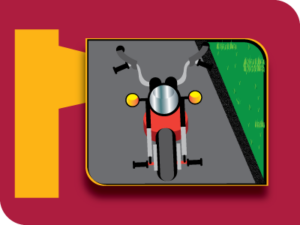Driving comes with many responsibilities. One of the most important is ensuring the safety of vulnerable road users. This can include pedestrians, cyclists, and motorcyclists. Being aware of your surroundings and exercising patience and caution when sharing the road with these users is important.
Here are some ways to keep everyone safe on the road this summer:
Share the road. These road users have just as much of a right to use the roadways as you do. Make sure to give at least three feet of space to avoid making contact when passing or changing lanes around them.
Stay aware of your surroundings. Summer is a popular time for motorcycles and bicycles, and more pedestrians will be out walking, jogging, and running. Stay alert of all activity on the roads by avoiding distractions, such as texting, facetiming, eating, or any other things that divert your attention from the road.
Look twice. Motorcycles and bicycles are smaller than cars and can be challenging to see. According to Zero Deaths Maryland, “When there is a crash involving a car and a motorcycle, the car driver is at fault more than half the time.” To avoid this, always check your blind spots multiple times before merging, changing lanes, or pulling into traffic. Drivers turning right on red should double-check for cyclists before proceeding.
Be more cautious when visibility is limited. Visibility can be reduced during the night and inclement weather. Drive with extreme caution around these times to make sure you don’t miss pedestrians, cyclists, and motorcyclists.
Watch your speed. Speeding is inherently risky, but when pedestrians are involved, it can be deadly. According to Zero Deaths Maryland, “Pedestrians or bicyclists struck by a motorist driving 40 mph are eight times more likely to die than a pedestrian or bicyclist struck at 20 mph.”
Pay attention to road signs. School zones and crosswalks are more likely to have pedestrians and bicycles. Stay vigilant in these areas, don’t pass vehicles stopped at a crosswalk, and always obey any crossing guard stationed there.
For more information, visit:




